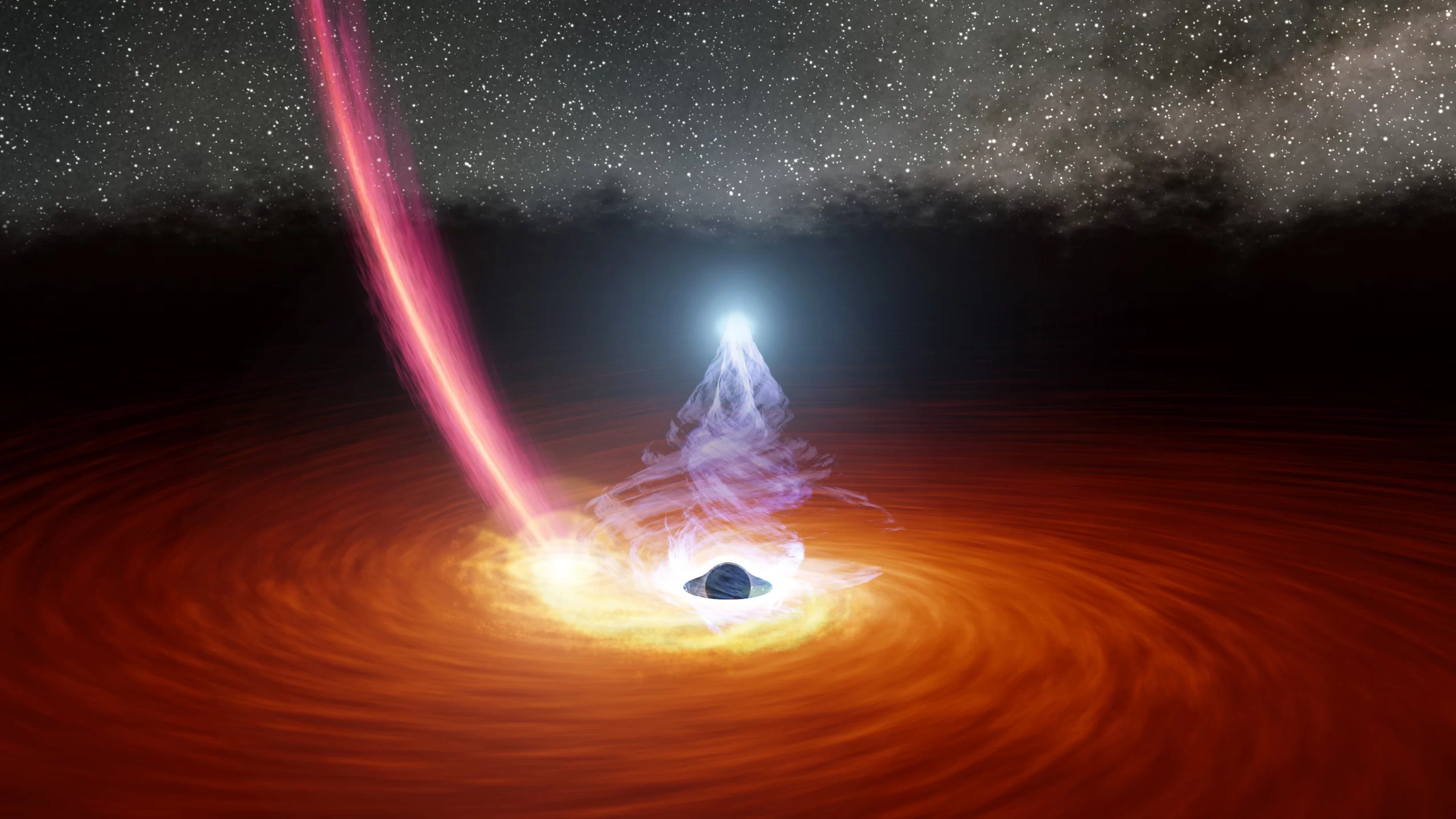Astronomers have found eight “echoing black hole binari” new in our galaxy with a new automatic search tool they call “Echo Machine.” This is a system with orbiting stars, and sometimes eaten by black holes. Previously, only two systems like that in the Milky Way were known to emit “X-ray echoes” that could be detected.
There are millions of black holes scattered in our galaxy. They are a very strong gravitational well that bent space and time. No one fell, even light, could run away from him. This makes them dark according to definition, and difficult to detect. But when the black hole pulls the gas and dust from the orbiting stars, it can emit a burst of X-rays that bounce and echo gas that rotates into it and briefly illuminates the black hole environment.
Astronomers have published their findings in a research article entitled, “The Nicer” Reverberation Machine “: A systematic study of the time lag in Binary X-Ray Black Hole,” published in The Astrophysical Journal.By comparing this X-ray echo throughout the system, the team has united the general picture of how black holes develop during the explosion. They observed that the black hole first experienced “hard: the situation, where he prepared a high -energy corona photons along with a relativistic particle jet which was then launched at the speed of light.
At one point, the black hole issued a high high -energy flash before switching to a state of “low energy,” low energy. This flash can be a sign that the black hole corona (a high -energy plasma region is just outside the boundary of the black hole) briefly expands and releases a high -energy particle explosion before disappearing altogether.This new finding can help scientists explain how bigger, supermasi -black holes in the middle of the galaxy can remove particles on all cosmic scales that are far away to form galaxy formations.
“The role of black holes in the evolution of galaxies is an extraordinary question in interesting modern astrophysics, this black hole binary seems to be a supermasi -mini black hole, and thus by understanding the explosion in this nearest small system, we can understand how the same explosion In the supermasi -black hole affects the galaxy where they live, “said Erin Kara, Assistant Professor of Physics at MIT, in a press statement.
Kara and her colleagues use X-ray echoes to map the black hole environment, similar to the bats of bats using echolokoci to navigate the surrounding. The bat emits the sound that bounces from obstacles and returns to bat as echoes. Animals at night can calculate the distance between it and obstacles based on the time needed by Echo to return to them, helping them map their environment.
Likewise, the research team wanted to map around the black hole using X-ray echoes. These echoes present a delay time between two types of X-rays: light emitted directly from the corona, and the light from the corona that bounces from the gas and dust that rotates into a black hole.
The researchers can observe the time where the telescope receives light from the corona and compares it when receiving X-ray echoes to calculate the estimated distance between the corona and the accretion disk (plasma flows such as disks, gas, dust and other material around the black hole).
Observing how this time delays change from time to time will reveal how Corona and Disk Black Hole evolved when the black hole consumes star material.As a side project, Kara works with scholars of education and music to change X-ray echoes into sound waves that can be heard by humans. You can listen to this wave in the video below.
The team identifies the general theme of evolution in all systems. In the initial hard condition, when corona and high -energy particles dominate the energy of black holes, they detect short and fast time lags, in the millisecond order. This situation lasted for several weeks. After that, the transition occurs for several days, where Corona and Jet Sputter and die.
Then, the soft state dominated by X-rays is lower than the discretion of the black hole appreciation takes over. During this transition period, astronomers found that the laged time became longer for a short time in all ten systems, implying that the distance between the corona could develop briefly out and up in a high -energy burst before the black hole finished consuming most of the parts Large stars and silence.

